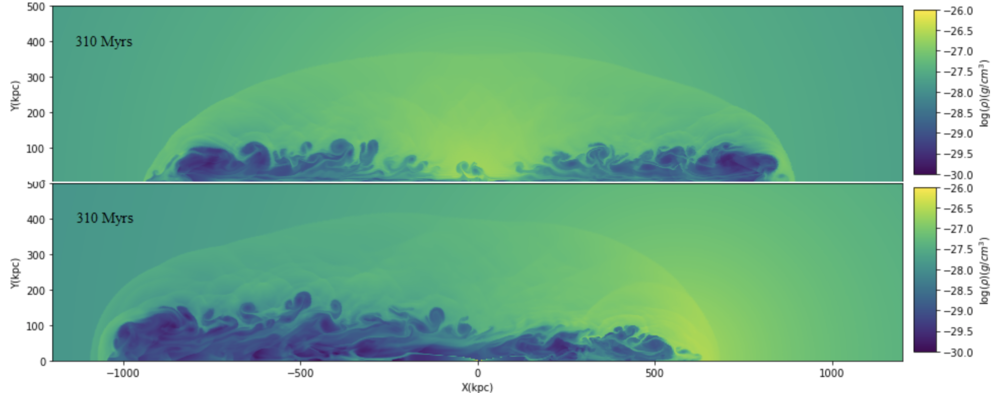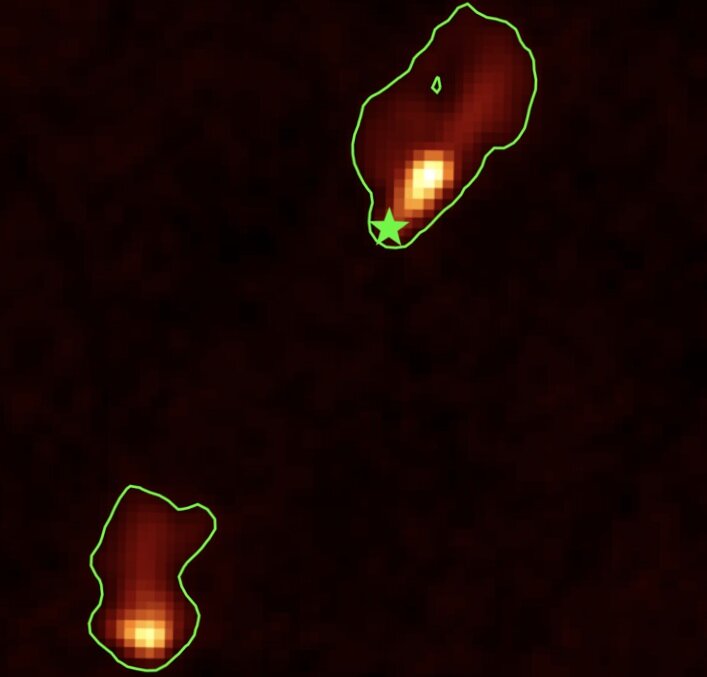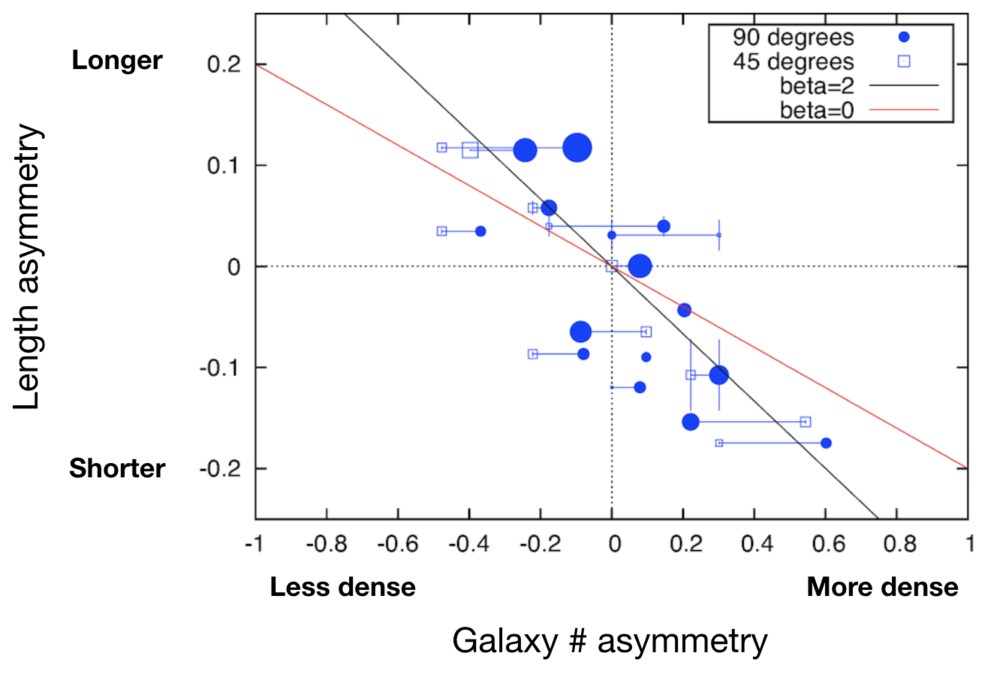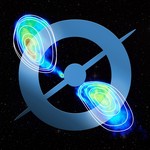Environment as a cause of radio source asymmetry
Nature vs Nurture in the galactic zoo

The plasma jets produced by some AGN extend far beyond their host galaxy and penetrate into the intergalactic and intercluster medium (IGM and ICM respectively), and it is natural to expect that these highly energetic jets might impact that environment and be impacted by it in return. This idea is supported by numerical simulations that show jets will be interrupted or impeded if they’re incident on denser gas. We also see evidence of asymmetrical radio lobes in observations.
During the Summer of 2015—2016, I worked with Dr Stanislav Shabala and Dr Ross Turner at the University of Tasmania as part of the Radio Galaxy Zoo group, studying the impact that environment has on radio lobes.
We would ideally be able to measure the background density as smoothly as in the above simulations, however this would require blanket sky coverage of high-resolution X-ray observations, which is exceptionally unrealistic and so we used the number density of galaxies instead as a proxy for the gas density in a given direction. Asymmetry in the number of these neighbouring galaxies was compared to the asymmetry in lobe lengths and brightnesses.
We found that galaxy number asymmetry is quite strongly correlated with lobe length asymmetry, with the shorter lobe within a pair typically inhabiting a denser environment than its counterpart.


